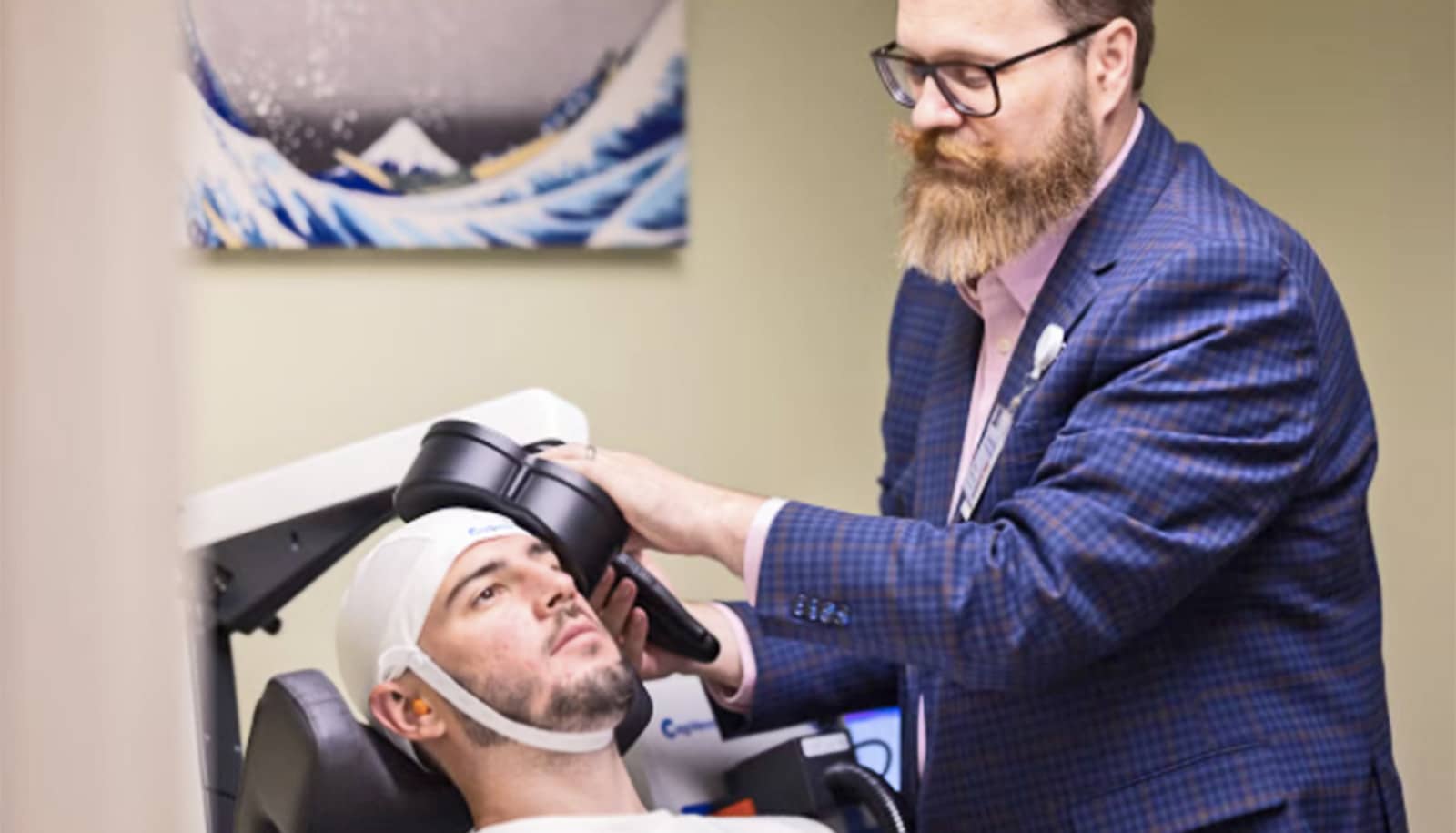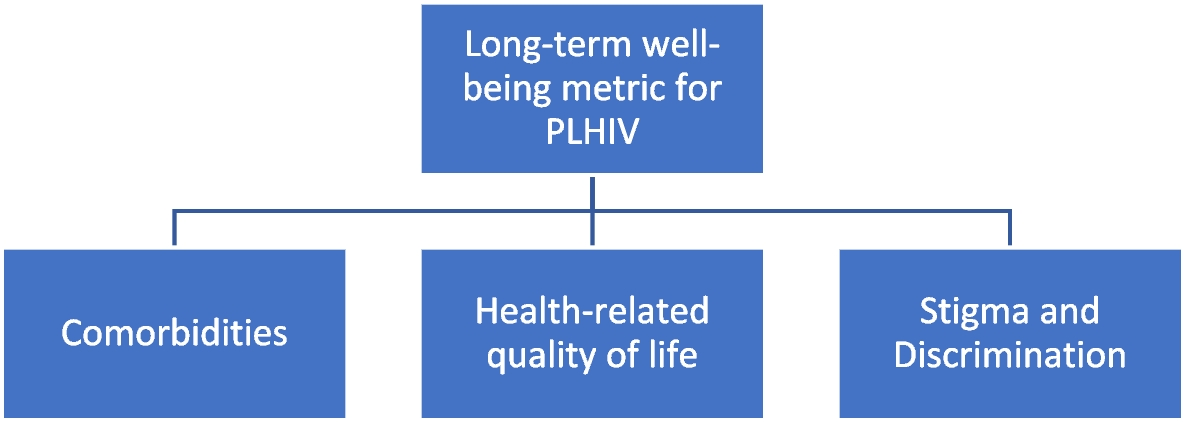- Brain Signals May Predict Alzheimer’s; CTE and Dementia; NIH Chief Talks Autism MedPage Today
- Brown University neuroscientists help identify a biomarker for Alzheimer’s disease progression Brown University
- Brain Wave Patterns Could Serve as Biomarkers to Predict Progression from MCI to Alzheimer Disease, Novel Research Suggests Patient Care Online
- Brown University Researchers Identify Brain Biomarker Linked to Progression from Mild Cognitive Impairment to Alzheimer’s Disease geneonline.com
Category: 8. Health
-
Brain Signals May Predict Alzheimer's; CTE and Dementia; NIH Chief Talks Autism – MedPage Today
-

Many studies of air-cleaning tech say they curb viral spread, but new review raises questions
Although many studies on air-cleaning technologies conclude that they prevent the indoor spread of respiratory viruses such as SARS-CoV-2 and influenza, only a small fraction examine whether they reduce human infections or identify potential harmful emissions, finds a scoping review published today in the Annals of Internal Medicine.
Researchers from the University of Colorado (UC) School of Medicine and the National Institute for Occupational Safety and Health (NIOSH) analyzed 672 primary studies published from 1929 to 2024 on the effects of engineering infection-control interventions designed to remove viruses from the air.
The COVID-19 pandemic heightened interest in these technologies, which include high-efficiency particulate air (HEPA) filters, germicidal ultraviolet (GUV) lights, ionizers, and advanced filtration systems found in many homes, healthcare facilities, schools, and businesses.
“Many of these technologies look promising on paper but we just don’t know if they work in the real world,” lead author Amiran Baduashvili, MD, of UC, said in a university news release. “People are buying and installing these systems in homes and schools hoping to protect themselves and their families but the science hasn’t caught up to the marketing.”
Only 8% included human participants
Of the 672 studies on a total of 1,073 interventions, 90% evaluated environmental samples only, only 8% included human participants, and 1% were based on sentinel animals. No studies reported pregnant women, fetus health, or postpartum populations. A total of 60% of studies analyzed at least one intervention classified as pathogen inactivation, with 30% involving pathogen removal or air exchange or dilution, and 21% on air exchange or dilution.
In total, 51 were observational studies, and six were randomized controlled trials. Studies were from all six World Health Organization regions, including the Americas (41%), Europe (25%), and the Western Pacific (25%). Three studies were from Africa.
Most environmental studies were conducted in scaled or full-sized chambers. Other common settings were real-world or simulated healthcare facilities, schools, other workplaces, transportation conveyances, and residential buildings.
Of all studies, 49% measured viable harmless microbes from air samples, followed by nonbiological particulate matter (eg, tracer gases, dust; 29%), and disease-causing viruses or bacteria (22%). Potential lung irritants (eg, ozone) that can be produced by ionizers, plasma-based technologies, and some UV systems were measured only rarely.
No studies measured quality of life or functioning, sustainability (eg, carbon footprint, greenhouse gas emissions), or economic analysis.
Funding statements were unclear or unreported in 23% of studies. Of those with funding statements, 30% had multiple funding types. Most (66%) reported government funding. Conflict of interest (COI) statements were absent or unclear in 45%. In 291 studies, no authors included a COI statement. In the remaining 77 studies, 40% reported at least one COI.
Research on real-world health outcomes needed
“We were surprised to find that most of the research tested air cleaning devices in lab chambers, not in real-world settings where people live, work or go to school,” Lisa Bero, PhD, of UC, said in the release. “We need stronger studies that look at actual health outcomes, whether people are actually exposed to fewer pathogens or get sick less often, and not just measurements of particles in the air.”
Coauthor Louis Leslie, of UC, said, “Ozone and other chemicals created by some air-cleaning devices can actually harm the respiratory system, especially in children or people with chronic respiratory illnesses.”
Continue Reading
-

7 Subtle Skin Cancer Symptoms, According to Dermatologists
While basal cell and squamous cell carcinomas tend to confine themselves to your hide, melanoma—which is typically characterized by a new or changing mole—is deadly because it eventually spreads into your body and causes systemic disease, Dr. Friedman explained.
If a melanoma does metastasize, the types of symptoms you experience depend a lot on the location of your cancer. “If the melanoma is by your lungs, you could have shortness of breath, or if it’s on your head, you may have headaches or vision trouble,” he says. “Really, the symptoms are all over the place.”
Unfortunately, if you don’t catch a melanoma until it reaches this stage, the prognosis is grim. “I hate to be dire, but if you’re experiencing these symptoms because a melanoma has metastasized, you’re already in big trouble,” Dr. Friedman said.
There’s also no predicting where a melanoma mole is likely to show up or take root, because “there’s really no predictable pattern,” he added.
That’s why it’s so important to pay attention to your skin by doing a self-exam at least once per month: Flagging any odd changes to your doctor ASAP can save your life.
Continue Reading
-

Study: Rapid nasal-swab test cuts anti-MRSA antibiotic use in pneumonia patients
Drazen Zigic / iStock A nasal swab-based rapid test for methicillin-resistant Staphylococcus aureus (MRSA) helped reduce unnecessary antibiotic treatment in patients with pneumonia, Chinese researchers reported last week in Antimicrobial Resistance & Infection Control.
For the prospective study, which was conducted at a tertiary general hospital in China, researchers collected nasal swabs from 300 pneumonia patients and tested them with a rapid polymerase chain reaction (PCR) test for MRSA colonization. The aim of the study was to see whether rapid nasal-swab PCR testing for MRSA could help reduce anti-MRSA therapy, which is used in up to one-third of hospitalized pneumonia patients but is frequently unnecessary.
Half of the patients were assigned to the notification group (NG), in which attending clinicians were notified of test results, and the other half to the control group (CG). The primary outcome was the duration of MRSA-targeted antibiotics (vancomycin, linezolid, and teicoplanin). Secondary outcomes included adverse events, costs, and in-hospital mortality.
Shorter course of therapy in notification group
Rapid testing detected MRSA in 16 (5.3%) of the 300 patients. The average duration of anti-MRSA therapy in the NG was 5.7 days, compared with 7.9 days in the CG. NG patients had fewer renal injuries than CG patients (1.3% vs 8%), as well as lower antibiotic costs ($622 vs $882), and did not see an increase in in-hospital mortality (12.7% vs 16.7%).
The researchers also found that clinicians in the NG were more willing to change antibiotics than those in the CG (44.5% vs 14.7%) and that most stopped anti-MRSA treatment within 4 days, compared with 6 days in the CG. A multivariate analysis showed that being in the NG was an independent influencing factor for stopping anti-MRSA treatment within 4 days (odds ratio, 4.5; 95% confidence interval, 2.6 to 7.9).
“In conclusion, the nasal swab-based PCR screening method could help reduce unnecessary anti-MRSA treatment more quickly,” the study authors wrote. “Early management of antimicrobials to reduce the experience of anti-MRSA drug treatment reduce the side effects of antibacterial drugs, and also help reduce the economic burden of antibiotic treatment.”
Continue Reading
-

Supplement could help remove ‘forever chemicals’ from the body
A new study suggests a common dietary supplement could decrease levels of forever chemicals in the body.
They’re used to make coats waterproof, pans nonstick, and furniture stain resistant; they’re even effective at fighting fuel fires. But for all their amazing properties, PFAS have a dark side: nature, including human bodies, can’t figure out how to break them down. They are forever chemicals.
“Every person in the United States, essentially, is walking around with PFAS in their body,” says Jennifer Schlezinger, a Boston University School of Public Health professor of environmental health.
PFAS—per- and polyfluoroalkyl substances—are associated with reduced ability to have an immune response to a vaccine, high cholesterol liver toxicity, hypertensive disorders of pregnancy, and low birth weights in infants.
But Schlezinger may have discovered a potential way to flush them out of our systems.
In a new study, she found taking a fiber supplement with meals could reduce the levels of PFAS in the body. The results appear in Toxicology and Applied Pharmacology.
“The real concern with PFAS is that they’re water-soluble,” she says. “Many of the toxic chemicals in our environment, the man-made ones, tend to dissolve in water. People are largely being exposed through contaminated drinking water, through contaminated food, and then, in part, from products within one’s home.”
A separate study found elevated PFAS levels in people who were exposed to them in their drinking water and in some foods, including seafood, eggs, and brown rice. But Schlezinger discovered that fiber supplements taken with a meal are like a PFAS magnet, attracting the forever chemicals and bringing them along as they exit your body.
An expert in molecular toxicology, Schlezinger has long studied the role of environmental toxins in disease development and adverse health effects. But her latest breakthrough on reducing PFAS levels in human bodies started when she was looking for natural ways to lower her cholesterol—it was, she says, a “life meets science moment.”
Schlezinger wanted to reduce her cholesterol, but didn’t want to take a drug, so she started researching dietary interventions and found that gel-forming dietary fibers might help. One such fiber is cholestyramine, which, when taken with food, binds to bile acid and leaves the body with it after digestion. The body then has to replace the bile acid lost, and draws cholesterol from the blood to do so, reducing cholesterol levels.
Schlezinger realized that PFAS, like bile acids, are surfactants, with a neutral end and a charged end, which is what makes the acids stick to the fibers. She wondered if gel-forming fibers could help us expel PFAS just as they do with bile acids.
“PFAS really easily enter the body, but the problem comes in that we can’t break them down, and we can’t get them out of the body,” Schlezinger says.
“Something I tell my toxicology students all the time is a key principle in toxicology: the longer something stays in the body, the more likely it is to cause toxicity. So, because PFAS can’t leave the body easily, they build up in concentration.”
With her colleague at University of Massachusetts Lowell, Dhimiter Bello, Schlezinger planned a couple of pilot studies, including in humans. Using samples from a clinical trial of an oat beta-glucan supplement—a gel-forming fiber—Schlezinger and Bello found a statistically significant effect on PFAS levels.
They then took their hypothesis—that taking a gel-forming fiber with a meal would decrease levels of PFAS in the body, as well as reducing cholesterol—to the Department of Defense, which funded further studies through its Toxic Exposures Research Program. The program’s goal is to “prevent, minimize, and mitigate the impact of military-related toxic exposures and improve the health and quality of life of those affected”; exposure to a military base is reportedly a risk factor for high PFAS. Schlezinger has also been working with Chelsea Simone, an Army veteran and nurse practitioner who advises Schlezinger’s team on veterans’ concerns.
Now, Schlezinger is continuing her work, testing seven different diets to determine the optimal gel-forming fiber to use to decrease PFAS levels.
There are also limitations to the original pilot study that she’d like to tackle. Before the trial with cholestyramine, the only way to get PFAS out of your body was bloodletting, or phlebotomy. People who menstruate tend to have lower PFAS body burdens, so Schlezinger says it made sense to do the trial only on people with particularly high levels of PFAS: men. She also notes that while they found a statistically significant effect, she and Bello couldn’t control for continued exposure to PFAS, and subjects only took the supplement for four weeks.
“We want to figure out if we’re right: Is the hypothesis correct when we are testing it in a very controlled scenario?” Schlezinger says.
“Also, we’ve chosen two fibers to work with to begin with, but there are other gel-forming fibers, and perhaps combinations of gel-forming fibers that might work best. So we want to maximize how well this approach works.”
Since the Trump administration announced rollbacks on limits for PFAS in drinking water in March, they have been a hot topic. Schlezinger thinks the rollbacks are a mistake, but says the process is ongoing, so nothing has changed yet.
“It’s not good news by any way, shape, or form,” Schlezinger says. “But PFAS are not threatening people any more than they are right now.”
And, as far as her research is concerned, Schlezinger wants to be clear: eating a high-fiber diet is not necessarily what she’s recommending. A dietary supplement, she says, is more accessible, and people are much more likely to take it than they are to change their whole diet.
“What is exciting about this potential intervention is its accessibility,” she says. “It’s feasible. I bought every single supplement, every single fiber that I’m testing, on Amazon.” (One of the best-known gel-forming fibers is psyllium, the key ingredient in Metamucil.)
Even then, the pilot study is just the start: “I don’t want to imply that you’re going to take a fiber supplement for a few months and the PFAS are going to be gone,” Schlezinger says.
Of course, she adds, people should speak to a doctor before increasing their fiber intake significantly—but it’s doable. For over two years, Schlezinger, and, begrudgingly, her husband (his review of the taste: “gross”), have been taking a scoop of oat beta-glucan, the original gel-forming fiber she tested, mixing it in pomegranate juice and drinking it with meals.
“It’s done amazing things for my cholesterol,” Schlezinger says. “I don’t have to take any drugs. I’m back to normal.”
Source: Boston University
Continue Reading
-

Can brain stimulation end addiction?
Yale neuroscientist Vaughn R. Steele is spending the summer testing whether a treatment known as transcranial magnetic stimulation can help people with alcohol and opioid addiction.
Vaughn Steele is calling it his “summer of TMS.”
For weeks, Steele, an assistant professor of psychiatry at the Yale School of Medicine, and members of his lab have traveled to an addiction treatment center in Middletown, Connecticut, where they are administering a non-invasive treatment known as transcranial magnetic stimulation (TMS) to patients with treatment-resistant addictions.
TMS uses electromagnetic pulses to stimulate specific areas of the brain, when treating depression and other psychiatric conditions. A coil placed near the patient’s head delivers pulses, with the hope of activating or inhibiting certain nerve cells. If successful, the treatment can disrupt addiction cravings and reduce future use.
A team led by Steele is administering TMS to roughly 40 participants who are struggling with either alcohol use disorder (AUD) or opioid use disorder (OUD). Participants are recruited just days after detox and are in the early recovery period of treatment at an in-patient facility. The study is the first of its kind to be administered during the early recovery stages, which are the most dangerous period for relapse, Steele says.
Treatments should wrap up by mid-August. Three months later, after patients have been discharged from the in-treatment facility, the researchers will conduct interviews to determine whether the participants have experienced a reduction in the amount and/or frequency of their alcohol or opioid use.
The hope is that resulting data will show TMS may help curb substance use during the early treatment stages for AUD and OUD. TMS has already proven effective in blunting nicotine craving in smoking cessation programs and in treating AUD in an out-patient protocol. Steele has had previous success using TMS to treat patients with cocaine use disorder.
“We’ll learn so much this summer about the feasibility and efficacy of TMS as an intervention in in-patient centers for OUD and AUD,” he says.
Here, Steele discusses the pressing need for new addiction treatments and the hope that TMS could hold for so many people:
The interview has been edited for length and clarity.
The study is funded by Yale’s psychiatry department and the Olin Neuropsychiatry Research Center at Hartford Hospital.
Source: Yale
Continue Reading
-

Study Finds Walking Faster for Just 15 Minutes a Day Can Help You Live Longer
Gym memberships and Pilates classes are a fine way to stay fit, but for those of us with no budget, little time, and even less inclination to join-in with organized exercise, science may have the answer—and it’s as simple as walking faster, according to a new study. The breakthrough work, published recently in the American Journal of Preventive Medicine, wanted to build on the obvious fact that walking is good for our health by investigating how picking up the pace could boost our longevity while protecting our wallets. Is it better to walk slower for longer, or could a bit of fast fitness pay dividends? Science has the answer.
How Was the Study Carried Out?
With much of the published research on the benefits of walking being gathered from middle-to-high income white populations, Wie Zheng, MD, PhD, who was the study’s lead investigator from Vanderbilt University, wanted to find out if picking up our walking pace could be a smart answer for everyone—from underserved communities, through to those who are simply time poor. To figure this out, Dr Zheng’s team analyzed data from a Southern community cohort study involving almost 80,000 predominantly low-income and Black individuals from 12 southeastern states.
The participants had provided information to the experts such as how many minutes per day they generally spent doing slow walking tasks like moving around the house or making light exercise, as well as information on their time spent doing faster walking activities such as walking upstairs, brisk walking, or more vigorous exercise. The statisticians then cross references the cohorts and their level of walking activity against those who went on to develop ailments such as cardiovascular disease and those who later died from any cause.
What Were the Results?
While those who performed more than three hours per day slow walking experienced a small reduction in mortality rates, those who walked fast for as little as 15 minutes per day received a massive 20% reduction.
The protective effects of faster walking were particularly pronounced in cardio health outcomes, but why would this be? Heart efficiency was improved for those faster walkers, likely because a quicker walking pace is an aerobic exercise that supercharges cardio health by increasing oxygen delivery and providing a better pump. The faster walkers were also associated with better body composition, staving off obesity related scourges like hypertension.
“Our research has shown that fast walking as little as 15 minutes a day was associated with a nearly 20% reduction in total mortality,” explained Dr Zheng. “This benefit remained strong even after accounting for other lifestyle factors and was consistent across various sensitivity analyses.”
Interestingly, the study made no distinction between walking purely for exercise, leisure, or work, meaning that you can decide how your fast walking sessions are scheduled. If you live a sedentary office-based lifestyle, a 15-minute brisk walk during your lunch break could make all the difference. Or maybe you could take the stairs rather than the elevator if working or living in high rise buildings. Walking is one of the most accessible, low impact methods of staying fit, and it doesn’t cost a penny.
“Public health campaigns and community-based programs can emphasize the importance and availability of fast walking to improve health outcomes,” suggested Lili Liu, who also served as the study’s lead author. “Furthermore, the findings of the reduced mortality associated with fast walking pace were supported by previous studies conducted in middle- and upper-middle-income populations. Individuals should strive to incorporate more intense physical activity into their routines, such as brisk walking or other forms of aerobic exercise.”
The take home message, according to these experts? When it comes to getting your steps in, aim for quality over quantity and choose faster sessions with a quicker pace over longer sessions with a bigger step count. And this advice is fit for everyone, regardless of bank balance.
Continue Reading
-
Small Cell Neuroendocrine Carcinoma of the Uterine Cervix: A Case Report Highlighting a Rare and Aggressive Tumor – Cureus
- Small Cell Neuroendocrine Carcinoma of the Uterine Cervix: A Case Report Highlighting a Rare and Aggressive Tumor Cureus
- FIGURE 2 Radiotherapy Field and Dose Distribution Maps. (A,B) The tumor… researchgate.net
- FIGURE 5 Clinical and Pathological Characteristics by Treatment Group…. researchgate.net
Continue Reading
-

A metric to measure long-term well-being of people living with HIV in Spain | BMC Medicine
Sabin CA, Reiss P. Epidemiology of ageing with HIV: What can we learn from cohorts? AIDS. 2017;31:S121–8.
Google Scholar
Costagliola D. Demographics of HIV and aging. Curr Opin HIV AIDS. 2014;9:294–301.
Google Scholar
Guaraldi G, Orlando G, Zona S, Menozzi M, Carli F, Garlassi E, et al. Premature age-related comorbidities among HIV-infected persons compared with the general population. https://doi.org/10.1093/cid/cir627.
Maciel RA, Klück HM, Durand M, Sprinz E. Comorbidity is more common and occurs earlier in persons living with HIV than in HIV-uninfected matched controls, aged 50 years and older: a cross-sectional study. Int J Infect Dis. 2018;70:30–5.
Google Scholar
Sutton SS, Magagnoli J, Cummings TH, Hardin JW, Edun B, Beaubrun A. Chronic kidney disease, cardiovascular disease, and osteoporotic fractures in patients with and without HIV in the US veteran’s affairs administration system. Curr Med Res Opin. 2019;35:117–25.
Google Scholar
Ford N, Vitoria M, Penazzato M, Doherty M, Shubber Z, Meintjes G, et al. Causes of hospital admission among people living with HIV worldwide: A systematic review and meta-analysis. Lancet HIV. 2015;2:e438–44.
Google Scholar
Miners A, Phillips A, Kreif N, Rodger A, Speakman A, Fisher M, et al. Health-related quality-of-life of people with HIV in the era of combination antiretroviral treatment: a cross-sectional comparison with the general population. Lancet HIV. 2014;1:e32-40.
Google Scholar
Nuño N, Martínez A, Martínez S, Cobos M, Hernández JS, Polo R. Sex differences in health-related quality of life and poverty risk among older people living with HIV in Spain: a cross-sectional study. PLoS One. 2024;19: e0301335.
Google Scholar
Brañas F, Sánchez-Conde M, Carli F, Menozzi M, Raimondi A, Milic J, et al. Sex Differences in People Aging With HIV. JAIDS Journal of Acquired Immune Deficiency Syndromes. 2020;83:284–91.
Google Scholar
Safreed-Harmon K, Anderson J, Azzopardi-Muscat N, Behrens GMN, d’Arminio Monforte A, Davidovich U, et al. Reorienting health systems to care for people with HIV beyond viral suppression. Lancet HIV. 2019;6:e869–77.
Google Scholar
Safreed-Harmon K, Kall M, Anderson J, Azzopardi-Muscat N, Behrens GMN, d’Arminio Monforte A, et al. Ability to Monitor National Responses to the HIV Epidemic “Beyond Viral Suppression”: Findings From Six European Countries. Front Public Health. 2020;8: 36.
Google Scholar
Webster P. UNAIDS survey aligns with so-called fourth 90 for HIV/AIDS. Lancet. 2019;393:2188.
Google Scholar
World Health Organization (WHO). Global health sector strategies on, respectively, HIV, viral hepatitis and sexually transmitted infections for the period 2022–2030. Geneva; 2022.
Lazarus JV, Safreed-Harmon K, Barton SE, Costagliola D, Dedes N, del Amo VJ, et al. Beyond viral suppression of HIV – the new quality of life frontier. BMC Med. 2016;14:94.
Google Scholar
Lazarus JV, Safreed-Harmon K, Kamarulzaman A, Anderson J, Leite RB, Behrens G, et al. Consensus statement on the role of health systems in advancing the long-term well-being of people living with HIV. Nat Commun. 2021;12:1–14.
Jones J, Hunter D. Qualitative Research: Consensus methods for medical and health services research. BMJ. 1995;311:376–80.
Google Scholar
División de control de VIH y ITS de Epidemiología. Vigilancia Epidemiológica del VIH y sida en España 2020: Sistema de Información sobre Nuevos Diagnósticos de VIH y Registro Nacional de Casos de Sida. 2021.
Charlson ME, Pompei P, Ales KL, MacKenzie CR. A new method of classifying prognostic comorbidity in longitudinal studies: development and validation. J Chronic Dis. 1987;40:373–83.
Google Scholar
Berger BE, Ferrans CE, Lashley FR. Measuring stigma in people with HIV: psychometric assessment of the HIV stigma scale. Res Nurs Health. 2001;24:518–29.
Google Scholar
World Health Organization. WHOQOL: Measuring Quality of Life. 2012.
Adler M, Ziglio E. Gazing into the oracle : the Delphi method and its application to social policy and public health. 1996.
Grime MM, Wright G. Delphi Method. In: Wiley StatsRef: Statistics Reference Online. John Wiley & Sons, Ltd; 2016. p. 1–6.
Fraenkel J, Grofman B. The borda count and its real-world alternatives: comparing scoring rules in Nauru and Slovenia. Aust J Polit Sci. 2014;49:186–205.
Fuster-Ruizdeapodaca MJ, Laguía A, Safreed-Harmon K, Lazarus JV, Cenoz S, Del Amo J. Assessing quality of life in people with HIV in Spain: Psychometric testing of the Spanish version of WHOQOL-HIV-BREF. Health Qual Life Outcomes. 2019;17:1–13.
Validity MS. In: Linn RL, editor. Educational measurement. 3rd ed. Co: Macmillan Publishing; 1989. p. 13–103.
Kall M, Marcellin F, Harding R, Lazarus JV, Carrieri P. Patient-reported outcomes to enhance person-centred HIV care. Lancet HIV. 2020;7:e59-68.
Google Scholar
Safreed-Harmon K, Fuster-RuizdeApodaca MJ, Pastor de la Cal M, Lazarus J V. Problems undermining the health-related quality of life of people living with HIV in Spain: a qualitative study to inform the development of a novel clinic screening tool. Health Qual Life Outcomes. 2022;20(1):84.
Fuster-RuizdeApodaca MJ, White TM, Prats-Silvestre C, Iniesta C, Lazarus JV. A quality-of-life indicator for HIV care beyond viral suppression in Spain. In: 19th European AIDS Conference. Warsaw; 2023.
Vinuesa-Hernando JM, Gimeno-Gracia M, Malo S, Sanjoaquin-Conde I, Crusells-Canales MJ, Letona-Carbajo S, et al. Potentially inappropriate prescriptions and therapeutic complexity in older HIV patients with comorbidities. Int J Clin Pharm. 2021;43:1245–50.
Google Scholar
Bayes-Marin I, Egea-Cortés L, Palacio-Vieira J, Bruguera A, Mesías-Gazmuri J, Llibre JM, et al. Determinants of depressive symptoms in people living with HIV: findings from a population-based study with a gender perspective. Int J Environ Res Public Health. 2023. https://doi.org/10.3390/ijerph20043687.
Google Scholar
Knobel H, Domingo P, Suarez-Lozano I, Gutierrez F, Estrada V, Palacios R, et al. Rate of cardiovascular, renal and bone disease and their major risks factors in HIV-infected individuals on antiretroviral therapy in Spain. Enferm Infecc Microbiol Clin. 2019;37:373–9.
Gutiérrez F, Padilla S, García-Abellán J, Gutiérrez-Ortiz de la Tabla A, Ledesma C, Masiá M. Cancer screening in people with HIV: implementation in clinical practice and barriers perceived by medical specialists in Spain. Enfermedades infecciosas y microbiologia clinica (English ed). 2024;42:563–9.
Google Scholar
Guaraldi G, Milic J. The interplay between frailty and intrinsic capacity in aging and HIV infection. AIDS Res Hum Retroviruses. 2019;35:1013–22.
Google Scholar
Guaraldi G, Arends J, Buhk T, Cascio M, Curran A, Teofilo E, et al. “Moving fourth”: A vision toward achieving healthy living with HIV beyond viral suppression. AIDS Rev. 2019;21(3):135–42.
Google Scholar
Sambou C, Pourette D, Debeaudrap P, Raho-Moussa M, Allavena C. Multimorbidity in elderly people living with HIV: how do general practitioners manage? Sante Publique (Paris). 2023;35(1):37–45.
Freisling H, Viallon V, Lennon H, Bagnardi V, Ricci C, Butterworth AS, et al. Lifestyle factors and risk of multimorbidity of cancer and cardiometabolic diseases: a multinational cohort study. BMC Med. 2020. https://doi.org/10.1186/s12916-019-1474-7.
Google Scholar
Fontela C, Castilla J, Juanbeltz R, Martínez-Baz I, Rivero M, O’Leary A, et al. Comorbidities and cardiovascular risk factors in an aged cohort of HIV-infected patients on antiretroviral treatment in a Spanish hospital in 2016. Postgrad Med. 2018;130:317–24.
Google Scholar
Camps-Vilaró A, Pérez-Fernández S, Subirana I, Teira R, Estrada V, Domingo P, et al. Standardized comparison of cardiovascular risk factors prevalence in Spanish women and men living with HIV and in the general population. J Pers Med. 2021;11:1085.
Google Scholar
Brañas F, Jiménez Z, Sánchez-Conde M, Dronda F, De Quirós JCLB, Pérez-Elías MJ, et al. Frailty and physical function in older HIV-infected adults. Age Ageing. 2017;46:522–6.
Google Scholar
AIDS Study Group-SEIMC (GeSIDA). [GeSIDA Consensus Document for the Evaluation and Treatment of Kidney Diseases in Patients with Human Immunodeficiency Virus (HIV) Infection]. 2020.
AIDS Study Group-SEIMC (GeSIDA). [Consensus document on the diagnosis and treatment of sexually transmitted infections in adults, children, and adolescents]. 2017.
AIDS Study Group-SEIMC (GeSIDA). [Consensus document on metabolic disorders and cardiovascular risk in patients with human immunodeficiency virus (HIV) infection]. Elsevier; 2015.
AIDS Study Group-SEIMC (GeSIDA). [Consensus document on the clinical management of neuropsychiatric and cognitive comorbidity associated with HIV-1 infection]. 2020.
Unidad de vigilancia del VIH ITS y hepatitis B y C. Actualización del continuo de atención del VIH en España, 2021–2022. Madrid; 2023.
White TM. Enhancing the responsiveness of HIV healthcare services in Spain to address long-term well-being. University of Barcelona; 2024.
Fuster-Ruiz de Apodaca M, Prats-Silvestre C, Iniesta C, Koerting A, Velayos R, Del Amo J. Informe del estudio: “Experiencia de estigma de las personas con el VIH en España.” Madrid; 2024.
Gogishvili M, Costa SA, Flórez K, Huang TT. Policy implementation analysis on access to healthcare among undocumented immigrants in seven autonomous communities of Spain, 2012–2018. BMJ Open. 2021;11: 45626.
United Nations General Assembly. Political Declaration on HIV and AIDS: Ending Inequalities and Getting on Track to End AIDS by 2030. 2021.
Genberg BL, Kawichai S, Chingono A, Sendah M, Chariyalertsak S, Konda KA, et al. Assessing HIV/AIDS stigma and discrimination in developing countries. AIDS Behav. 2008;12:772–80.
Google Scholar
Wagner AC, Girard T, McShane KE, Margolese S, Hart TA. HIV-related stigma and overlapping stigmas towards people living with HIV among health care trainees in Canada. AIDS Educ Prev. 2017;29:364–76.
Google Scholar
Stangl AL, Earnshaw VA, Logie CH, Van Brakel W, Simbayi LC, Barré I, et al. The Health Stigma and Discrimination Framework: A global, crosscutting framework to inform research, intervention development, and policy on health-related stigmas. BMC Med. 2019;17:18–23.
Kay ES, Rice WS, Crockett KB, Atkins GC, Batey DS, Turan B. Experienced HIV-related stigma in health care and community settings: mediated associations with psychosocial and health outcomes. J Acquir Immune Defic Syndr. 2018;77:257–63.
Google Scholar
Earnshaw VA, Eaton LA, Collier ZK, Watson RJ, Maksut JL, Rucinski KB, et al. HIV stigma, depressive symptoms, and substance use. AIDS Patient Care STDS. 2020;34:275–80.
Google Scholar
Garrido-Hernansaiz H, Heylen E, Bharat S, Ramakrishna J, Ekstrand ML. Stigmas, symptom severity and perceived social support predict quality of life for PLHIV in urban Indian context. Health Qual Life Outcomes. 2016;14:152.
Google Scholar
Conway AS, Esteve A, Fernández-Quevedo M, Casabona J. Determinants and Outcomes of Late Presentation of HIV Infection in Migrants in Catalonia, Spain: PISCIS Cohort 2004–2016. J Immigr Minor Health. 2019;21:920–30.
Google Scholar
Gogishvili M, Huang TTK, Costa SA, Florez K, Mateu-Gelabert P, Valls MRA, et al. Late HIV diagnosis among immigrants in Spain vs. native-born Spaniards, 2010–15. Eur J Public Health. 2021;31:1123–8.
Google Scholar
Gogishvili M, Flórez KR, Costa SA, Huang TTK. A qualitative study on mixed experiences of discrimination and healthcare access among HIV-positive immigrants in Spain. BMC Public Health. 2021;21:1–15.
Ndumbi P, Del Romero J, Pulido F, Velasco Arribas M, Dronda F, Blanco Ramos JR, et al. Barriers to health care services for migrants living with HIV in Spain. Eur J Public Health. 2018;28:451–7.
Google Scholar
Andersson GZ, Reinius M, Eriksson LE, Svedhem V, Esfahani FM, Deuba K, et al. Stigma reduction interventions in people living with HIV to improve health-related quality of life. Lancet HIV. 2020;7:e129–40.
Google Scholar
Bourne K, Croston M. Resurrecting the “fourth 90”: towards a definition of health-related quality of life in HIV care. British Journal of Nursing. 2022;31:S23–7.
Google Scholar
Feyissa GT, Lockwood C, Woldie M, Munn Z. Reducing HIV-related stigma and discrimination in healthcare settings: a systematic review of quantitative evidence. PLoS One. 2019;14:e0211298.
Google Scholar
Lazarus JV, Van Hout MC, Fuster-Ruizdeapodaca MJ, Brown G, Guaraldi G. A call for health systems to monitor the health-related quality of life of people living with HIV. HIV Med. 2023;24:107–10.
Google Scholar
Continue Reading
-

A deep dive into influenza-associated acute necrotizing encephalopathy
Q&A: A deep dive into influenza-associated acute necrotizing encephalopathy | Image Credit: © Pixel-Shot – stock.adobe.com.
Q: In pediatric patients presenting with acute necrotizing encephalopathy (ANE), what early clinical and imaging findings should raise suspicion for ANE, and how can timely recognition alter management and prognosis?
A: When a child presents with sudden-onset encephalopathy in the midst of a viral illness—particularly with fever, seizures, or altered mental status—ANE should be on the radar. It is rare, but it progresses quite quickly and can be devastating. Seizures are common, and many children show dramatic neurologic decline within even a day or two of initial infectious symptoms.
Imaging is key to diagnosis and, in addition to the clinical picture, reflects the defining feature. MRI of the brain typically shows prominent bilateral lesions in the thalami—often considered the hallmark finding of ANE. A subset of these patients has a specific pattern called trilaminar necrosis of the thalami, and if that is seen, the diagnosis is ANE. These thalamic lesions in general are critical because the thalamus is the brain’s central relay station, or switchboard, and is highly implicated in disorders of consciousness. ANE lesions may also be seen in the brainstem, cerebellum, and white matter, and often show restricted diffusion or hemorrhagic changes. These findings, especially when paired with elevated liver enzymes, normal ammonia, low platelets, and high cerebrospinal fluid protein, are strong diagnostic clues.
Recognizing ANE early matters. Prompt diagnosis allows for early intensive care support and initiation of immunotherapy. In our U.S. multicenter case series of influenza-associated ANE (Silverman et al., published online July 30, 2025, JAMA), early steroid use may be linked to better outcomes. Delays in recognition and treatment can lead to cerebral edema and herniation, which unfortunately can result in death within the first week of illness—actually within the first few days in most fatal cases.1
Q: How should pediatricians approach the risk of ANE in children with recent viral infections—particularly influenza or COVID-19—and what additional considerations apply if there is a known familial RANBP2 variant or other genetic predisposition?
A: Most children who get the flu or other common viruses recover without complication—but a very small subset may develop ANE, particularly with influenza A (and especially, as our data suggest, the H1N1/2009 strain). Pediatricians should be extra vigilant during peak respiratory virus season (e.g., October-March, though cases have been observed outside this window) when a child with recent infection starts showing neurologic symptoms like confusion, lethargy, seizures, or focal neurologic deficits. We know that vaccination is key in helping prevent severe illness with influenza, and our findings suggest that vaccination may be one factor in preventing ANE. Only a small percentage of patients with ANE in our series were vaccinated, much lower than the national rates of influenza vaccination in children.
In some cases, there are genetic associations that predispose children to ANE. The most well-characterized of these is a gene called RANBP2. Children with known RANBP2 variants are at higher risk for familial ANE, which can recur with future viral illnesses. In families with RANBP2 variants, individuals who carry a problematic change, also known as a “pathogenic variant” in the gene, may have about a 40% lifetime risk of ANE. It is important to remember that this pathogenic variant is very rare in the general population, but it’s not uncommon among people who develop ANE. As mentioned, there are other genes in addition to RANBP2 that can be associated with an increased risk of ANE. This makes family history particularly important—if a sibling or parent has had unexplained encephalopathy, genetic testing should be performed for all first-degree family members. In our opinion, if there is suspicion for ANE, broad genetic testing should be done as soon as possible (e.g., whole genome sequencing). If you are encountering a case post-hospitalization, we maintain that a referral to a geneticist should be done for all cases of ANE, regardless of family history.
There are no formal guidelines for managing children with RANBP2 variants, but some clinicians recommend early antiviral and steroid treatment during febrile illnesses, and prioritizing influenza vaccination for these children and their households.
In light of our national data collection and analysis, for any child with ANE (genetic or sporadic), we strongly endorse early intensive care, alongside immunomodulatory (e.g., intravenous pulse-dose corticosteroids, plasmapheresis, tocilizumab, etc.) and antiviral (e.g., oseltamivir) therapy. Because most children in our national case series of influenza-associated ANE had not received the seasonal influenza vaccine, we also strongly recommend annual influenza vaccination.2
Q: What are the current recommendations for acute management of ANE in children, and when should pediatricians consider initiating or referring for immunomodulatory treatments such as steroids, IVIG, or plasmapheresis?
A: While there is no universal treatment protocol for ANE, most experts agree on starting high-dose intravenous steroids as early as possible. Other treatments like intravenous immunoglobulin (IVIg), tocilizumab, and plasmapheresis are also often used, but data remains limited on the efficacy of the myriad of possible immunotherapies. What is clear is that early recognition and prompt treatment are critical.
Any child suspected of having ANE should be referred emergently for high-acuity medical attention. Nearly all patients with ANE will require management in a pediatric intensive care unit. These children often need airway protection, watchful neurocritical care, and sometimes intracranial pressure monitoring. Emergency and critical care providers should be wary of cerebral edema and take concrete steps to lower intracranial pressure as indicated. Pediatricians should not wait for confirmatory imaging or labs to initiate care or transfer to a pediatric intensive care unit with the capacity to further manage children with ANE—time is brain.3
Q: For survivors of ANE, what are the key neurologic and developmental concerns pediatricians should monitor long term, and how can they coordinate multidisciplinary care to support recovery and function?
A: When children survive ANE, recovery can be long, grueling, and complex. Many are left with challenges like spasticity, movement disorders, seizures, or cognitive delays. In our U.S. case series encompassing the 2023-2024 and 2024-2025 influenza seasons, approximately 60% of the children followed beyond three months had moderate to severe disability. Nearly half regained the ability to walk independently, and 40% had returned to school. Another way of thinking of this is that a fair percent of survivors do, in fact, recover to some degree, and many recover quite significantly. While this is a critical illness with high morbidity and mortality, early recognition and immediate treatment may help improve outcomes. And for survivors, that long-term recovery will require rigorous support.
This makes close, ongoing follow-up essential. Pediatricians can play a key role in coordinating multidisciplinary care, including neurology, physiatry, rehabilitation, nutrition, and educational support. Many children will need 504 or individualized education plans (IEPs), physical and occupational therapy, and neuropsychological assessments and support.
Lastly, of course, it is also important to support families through this process. ANE is traumatic, and the path forward can be overwhelming. Helping families access services—while setting realistic but hopeful expectations—can make enormous differences in long-term outcomes.4
References:
- Influenza-Associated Acute Necrotizing Encephalopathy (IA-ANE) Working Group, Silverman A, Walsh R, et al. Influenza-Associated Acute Necrotizing Encephalopathy in US Children. JAMA. Published online July 30, 2025. doi:10.1001/jama.2025.11534
- Uyeki TM. Pediatric Influenza-Associated Acute Necrotizing Encephalopathy-Gaps Need to Be Addressed. JAMA. Published online July 30, 2025. doi:10.1001/jama.2025.13003
- Silverman A, Sasaki M, Espíndola Lima JE, et al. Child Neurology: Remarkable Recovery From Severe Acute Necrotizing Encephalopathy. Neurology. 2024;103(8):e209877. doi:10.1212/WNL.0000000000209877
- Fazal A, Reinhart K, Huang S, et al. Reports of Encephalopathy Among Children with Influenza-Associated Mortality – United States, 2010-11 Through 2024-25 Influenza Seasons. MMWR Morb Mortal Wkly Rep. 2025;74(6):91-95. Published 2025 Feb 27. doi:10.15585/mmwr.mm7406a3
Continue Reading